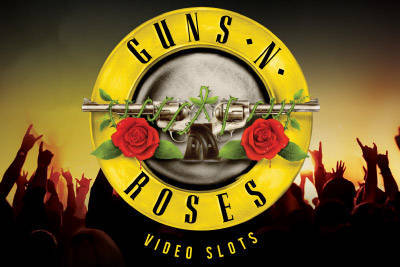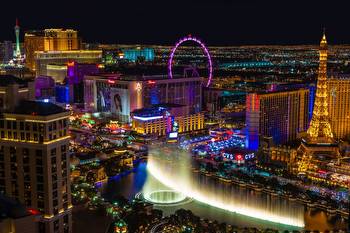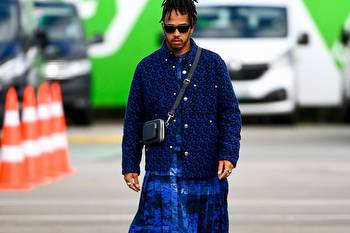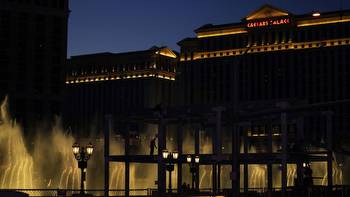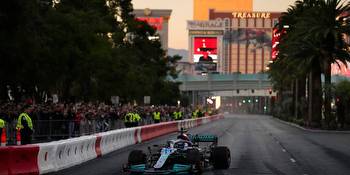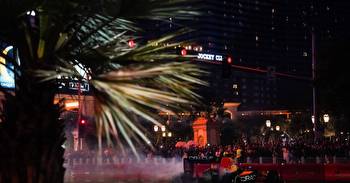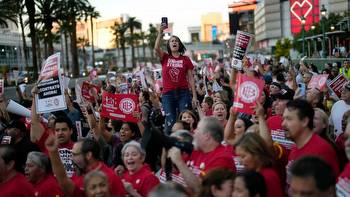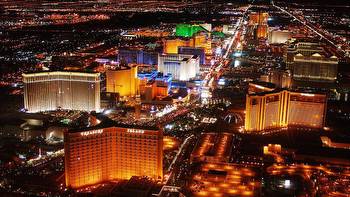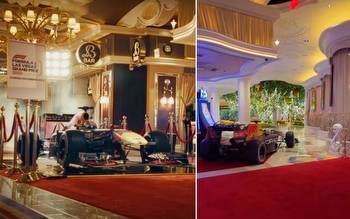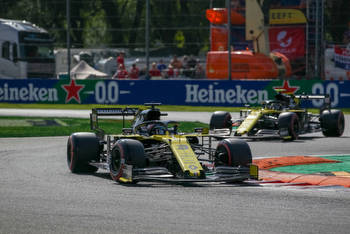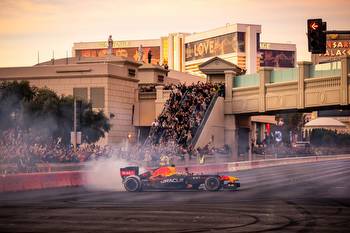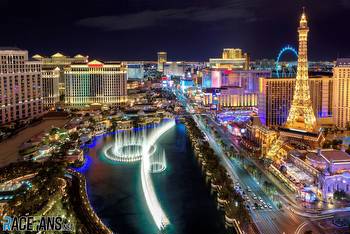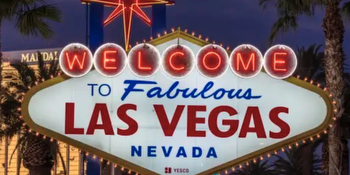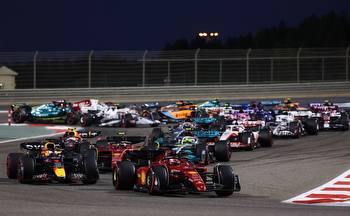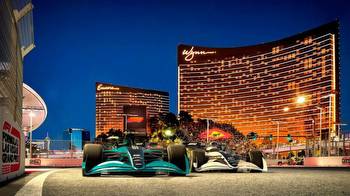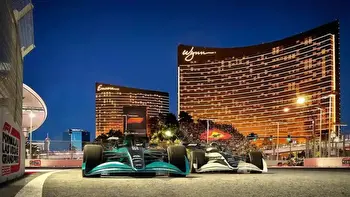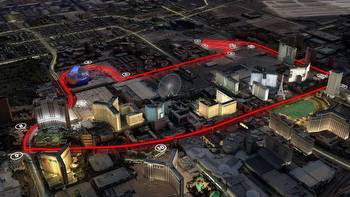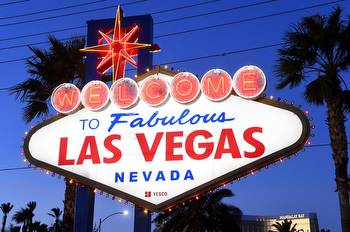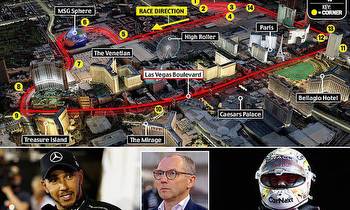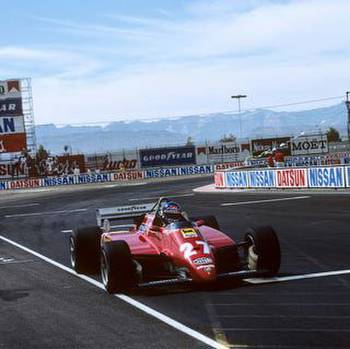Why F1’s first Las Vegas grand prix was an utter failure
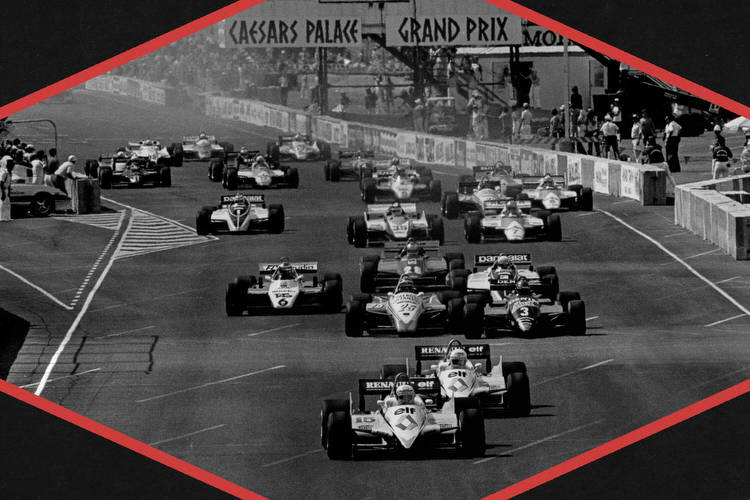
Stay informed on all the biggest stories in Formula One. to receive the Prime Tire newsletter in your inbox every Tuesday and Friday morning.
When Formula One announced in the spring of 2022 that it would stage a race in Las Vegas, it made too much sense not to happen. The city’s glitzy, entertainment-focused nature perfectly fits the sport. All the key players were invested not just in 2023 but in giving it a permanent place on the calendar.
So, the F1-Las Vegas union can’t fail, right?
It can, actually. We know that because it has failed before — and somewhat spectacularly. All one has to do is look back to 1981 and 1982 to understand why this bet doesn’t offer a guaranteed payout.
GO DEEPER
Our favorite Las Vegas GP fan events, from Valtteri Bottas haircuts to 'Shoey Bars'
The allure of Las Vegas
F1 first came to the Nevada desert in 1981 with the same kind of thinking that marks today’s race. It already had two races in the U.S. — at New York’s Watkins Glen International and in Long Beach, Calif. — but Vegas offered something different.
As the 1981 season finale, it was hyped as a star-studded affair that would showcase the glitz and glamor that Las Vegas offers, marketed towards a high roller demographic similar to how casinos promoted other sporting events.
“Caesars (Palace) was holding these boxing matches in their pavilion behind their hotel,” said Chris Pook, the founder of the Long Beach Grand Prix, brought in by race promoters to help organize the new event. “There weren’t a lot of seats, but the seats were very expensive, and they were packed. Everybody that wanted to come and gamble on the fight came, so they would sell out in literally hours.
“So Caesars was fairly confident if they did something like this for an F1 race that they would be able to get all their high rollers invited to come and participate and enjoy the event.”
Mario Andretti, then driving for Alfa Romeo, was excited when he heard F1 would be visiting Las Vegas. F1’s popularity in the U.S. was surging, with Watkins Glen having established itself and Long Beach quickly proving quite popular. Racing in a city as alluring as Las Vegas made sense.
Then Andretti learned the particulars. The race would not be held on a permanent track like Watkins Glen or even a properly built street circuit like in Long Beach. The organizers instead opted to create a course in a parking lot adjacent to the Caesars Palace hotel and casino located on the Las Vegas Strip.
That’s why the race was not the Las Vegas Grand Prix but the Caesars Palace Grand Prix.
“We figured that would be exciting, and we were all looking forward to it,” said Andretti. “But after seeing that venue where it was, I didn’t think it was going to have much life because geographically it was very restricted.”
Where the circuit was located within the city and how it was laid out would become significant factors in why F1 lasted just two years in Las Vegas before ignominiously pulling the plug.
The cost of compromise
It was a compromise. Lacking suitable options elsewhere and wanting to have the circuit as close as possible to the major casino backing the event meant working within a small plot of land that nestled up against a casino, Interstate 15 and the Las Vegas Strip (which, according to Pook, the city would not allow organizers to utilize fully).
The result was a 14-turn, 2.2-mile counter-clockwise circuit that featured no elevation changes and necessitated lots of back-and-forth sections to fulfill the 2-mile minimum length because of the small footprint.
“To fit it in the space was a challenge,” Pook said. “It was tough. Those cars, even in those days, needed to be able to stretch their legs and they were somewhat restricted by the layout of the circuit.
“It’s a bit unfair to call it a parking lot race because it was not really a parking lot — it was part of a parking lot and a lot of desert, dirt, which the circuit was built on. Caesars spent a lot of money, a huge amount of money, building the circuit.”
1982 was the last time F1 raced in Las Vegas (track on the left). On the right we have a very different layout for 2023. #LasVegasGP#F1pic.twitter.com/jsi9m2wxJf
— F1 Images (@F1_Images) November 8, 2023
Hitting the track confirmed the skepticism. Andretti and Derek Daly, who also competed in both Caesars Palace Grands Prix, recall a physically demanding circuit with short straightaways and constant tight turns. Drivers were pushed even further physically and mentally for the 1982 race when the ambient temperature was nearly 99° F (37° C). (This year, drivers are more concerned about the cold.)
“The heat was extreme,” Daly said. “For the first time and only time in my life as a racing driver, with about three laps to go, I began to get dizzy in the brake zones because it was so hot. I was so dehydrated, and the track was so bumpy, and there was no rest.”
The circuit was also aesthetically uninspiring. Built mainly upon the space where The Forum Shops mall now resides, that area of Las Vegas in the early 1980s lacked many of the signature structures that have since given Las Vegas its distinct appearance. And with the race being held on a Saturday afternoon, the trademark neon lights were unnoticeable. The setting was rather drab, lacking the kind of backdrop that should be associated with Las Vegas hosting a high-profile global sporting event.
“It was more a novelty than an event,” Daly said.
A marriage on the rocks
Support within the city was also muted. With Caesars Palace exclusively promoting the race and footing the bill, other casinos and hotels did not help market the race to its clientele, a far cry from the new Las Vegas Grand Prix, where nearly every prominent casino has a financial stake and is thereby motivated to promote the race.
According to Andretti and Daly, even though drivers stayed in the casinos, their presence essentially went unnoticed. And while several celebrities were in attendance, there was little buzz surrounding the festivities.
“We all stayed at Caesars Palace, and we could get fully dressed in our rooms, which we did, walk to breakfast wearing your driver suit, which we did, and no one noticed,” Daly said. “Nobody understood Formula One. Nobody knew Formula One drivers.”
Before too long, the participants realized that the city and F1 were destined to end like so many Las Vegas marriages: broken up.
“Quite honestly, realistically, when you looked at everything, there’s no way that this thing had a long life,” Andretti said. “Mainly, again, because of where it was; you had no solid infrastructure. At that time, you knew there would only be another year or two left.”
Few were surprised when, after two years, F1 bid adieu to Las Vegas. With the Caesars Palace Grand Prix a money-losing proposition and the fan support tepid, it made little sense to return despite years remaining on the contract between the parties.
In 1983 and 1984, the circuit held an IndyCar race, which also proved unsuccessful. It would be 41 years before F1 returned to Las Vegas, but when it does next week, it will be under much different circumstances and in a much different setting.
The new Las Vegas Grand Prix has strong support from the state and local government and will be held at night on a course awash in neon lights and before a crowd of up to 100,000 each day of the weekend. Pook estimates that 20,000 to 25,000 people attended the inaugural Caesars Palace Grand Prix for comparison’s sake.
What becomes of the Las Vegas Grand Prix will be determined with time. However, A lot would have to go awry for it to have anywhere close to the inglorious legacy that the Caesars Palace Grand Prix holds in the annals of F1.
“I think the legacy is a lesson learned,” Pook said. “You cannot put two pounds of manure in a one-pound bag. And in this case, Formula One was great in those days. The racing was great, the competition was great, everything was great. It just didn’t work. It just wouldn’t fit there. It didn’t give justice to the Formula One product.”
GO DEEPER
An ironic compromise: Why the Las Vegas GP starts at 10 p.m. PT
(Lead image of the 1982 Caesars Palace Grand Prix: Bernard Cahier/Getty Images))







